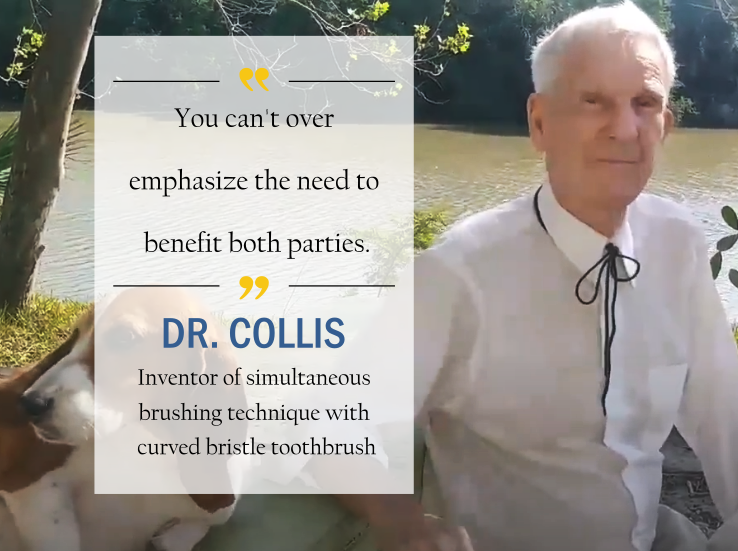A toothbrush designed for the manual abilities and psychological preferences of the patients
An important aspect in dental care is the psychological effect assisted brushing has on the caregiver as well as the patient. The oral hygiene of the people caregivers help may become neglected if they are feeling overwhelmed by balancing their many duties, patients, and own self-care. Brushing another person’s teeth is a difficult procedure that requires appropriately designed cleaning aids and training on the complex positional requirements needed to maintain a proper technique.
As a result of not having proper tools or training, toothbrushing becomes a very unrewarding daily chore for caregivers.
Inducing negative feedback from the patient, like gagging, can discourage the caregiver and cause them to feel as though their efforts are not only unappreciated but totally ineffective.
If caregivers were given the proper tool to work with and reasonably doable instructions, they would approach this task with less trepidation and their anxiety would not be transferred to the defenseless person needing aid with daily oral infection control.
In short, if caregivers are given a realistic regimen to follow and they feel as though a good job has been done, their confidence will be felt by the patient and a positive psychological environment will prevail.

Suggested procedures for assisted brushing:

Find a toothpaste that the person likes and fill the Collis Curve Toothbrush with toothpaste.

Slide brush over teeth until curved bristles touch gumline. If the person resists, do a circular scrub on the outside of their teeth until the person will let you cover his tooth with the brush. It may take a few days, but your problems will soon be over.

Move the handle laterally to brush back and forth on each quadrant of the mouth for 30 seconds. While doing this, tilt brush head side-to-side to allow curved bristles to slide along enamel surfaces and embrasures of teeth to scoop out debris in sulcus and gumline.

Use as a regular brush for a finishing scrub on the front teeth and any areas that may need extra care.
Impact on person receiving aid:
Fear of intrusion
Sensory overload
Pressure too hard
Uncomfortable placement
Gagging

Benefits of Daily Oral Infection Control:
Reduces respiratory pathogens
Improves psychological well-being
Improves social interactions
Huggable and kissable
Fresh breath and clean smile
Simultaneous brushing has made its way into research and dental literature.
Published studies include:
The curved-bristle toothbrush: an aid for the handicapped population
Nancy Johnson Williams, RDH, MS
Norman J. Schuman, DDS, MPH
Give your teeth a hug: A simplified brushing technique for children
Karen D. Avey, BS
An evaluation of the effectiveness of four mechanical plaque-removal devices when used by a trained care-provider
Peter P. Kambhu, DDS, MS
Steven M. Levy, DDS, MPH
A study of the effectiveness of two types of toothbrushes for removal of oral accumulations
Naseeb L. Shory, DDS, MPH
George E. Mitchell, DMD, MPH
Homer C. Jamison, DDS, DrPH
Assisted toothbrushing supplement to the oral soft tissue irritation test on The Collis Curve Toothbrush
R. L. Meckstroth, DDS
G. G. Keyes, DDS, MS
Improving Quality and Efficiency in Oral Hygiene
Richard L. Meckstroth, DDS
Providing Daily Oral Infection Control to Persons Dependent on Others for Activities of Daily Living: A Semi-Qualitative Descriptive Study
R Constance Wiener
Rebecca R Dinsmore
Richard Meckstroth
William Marshall
Toothbrush ‘A key to mechanical plaque control’
Deepak Grover
Ranjan Malhotra
Sumati J Kaushal
Gurpreet Kaur
Health and safety aspiration prevention
Indiana Gov Bureau
Providing Dental Care for Older Adults in Long Term Care
Ann Slaughter, DDS, MPH
Dental care for developmentally disabled
Britt Bovio, DMD
